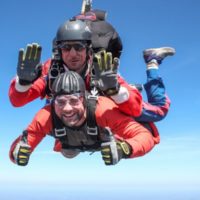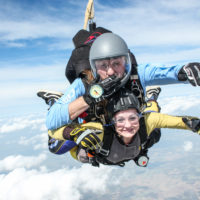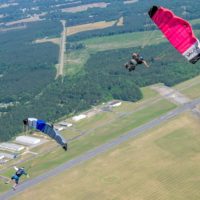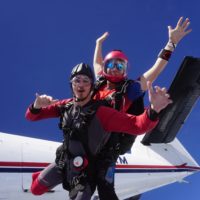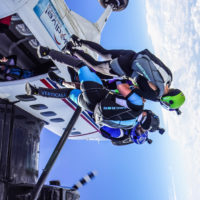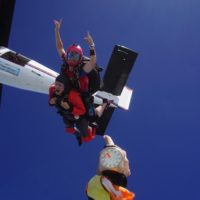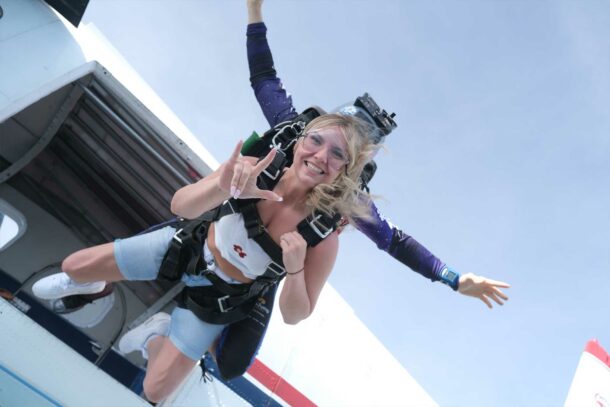How Long Does the Skydiving Process Take?
Thursday, September 24, 2020
No matter what country you come from, we as a human race all hate to wait. Waiting usually indicates an inefficient process or a breakdown in the system especially if a reservation is required, but that’s not quite the case when booking a skydive because there are multiple variables happening behind the scenes that can and often do cause delays. As a result of these variables, skydiving guests are often given a time range as defined in the confirmation email of between three and five hours. It’s definitely a big gap in time and despite our best efforts to inform our guests as to what’s happening, it can be frustrating because, you know… waiting.
How Long Does The Skydiving Process Take?
When skydiving centers are operating at maximum efficiency with no delays, the fastest the skydiving process usually takes is approximately two hours and fifteen minutes. This is what the process of tandem skydiving usually involves:
| Activity | Process | Time |
|---|---|---|
| Check-in | Check-in, completion of indemnification waiver and payment. | 45 Minutes |
| Training | Watching a training video and going through the steps with the trainer. | 45 Minutes |
| Getting Paired with Your Tandem Instructor | Meeting instructor, getting geared up and reviewing final instructions. | 20 Minutes |
| Boarding the Aircraft | Boarding the aircraft, getting seated and prepared for takeoff. | 6 Minutes |
| Flight to Exit Altitude | Take off to 13,500’ | 14 Minutes |
| Exit to Landing | Preparing to exit, free falling and the canopy flight. | 7 Minutes |
| Total Time | 2 Hours 17 Minutes |
The Variables That Cause Skydiving Delays
Weather
The number one variable that causes delays is the weather. If things aren’t on schedule, this is usually the cause. Weather delays usually involve any one of the following:
- Ground fog
- Clouds at a low altitude (known as a low ceiling)
- Rain
- Ground winds greater than 20 miles per hour
- Gusty winds
- High winds at jump altitude
Learn more about optimal wind conditions for skydiving.
Air Traffic Control
Another dreaded delay can occur due to air traffic control. Skydive Carolina operates in an area known as Class B airspace. To put it simply, our airspace is operated by the control tower at Charlotte Douglas International Airport and our pilots communicate with Charlotte ATC requesting drop permissions on every flight. Occasionally, we get requested to do a “go around” from Charlotte ATC because of commercial planes flying through our airspace on their path for landing at Charlotte Douglas. This happens most often when there’s bad weather on the north side of Charlotte and most of the commercial traffic has to be routed through our airspace to the south.
These delays can be frustrating, but it’s something that many skydiving centers near cities must contend with.
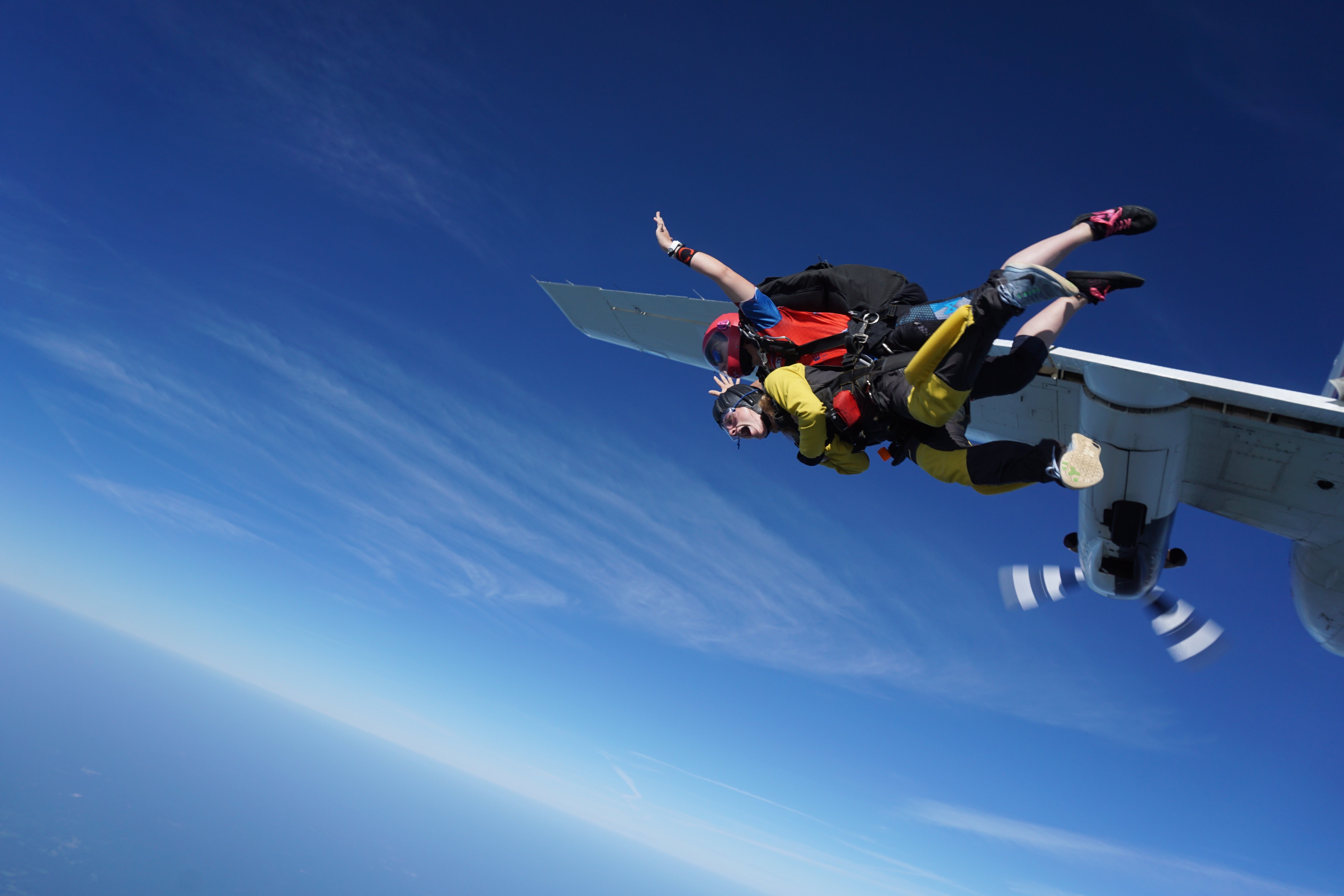
Aircraft Efficiency
One of the best aspects of Skydive Carolina is the type of aircraft we operate – the Twin Otter. The Twin Otter is regarded as the gold standard in skydiving aircraft because of its size, speed, and the fact that it has two engines. If there’s a con to it, it’s expensive to operate and as a result, it must have at least 14 people on board to fly (it carries 23 passengers).
The goal for any skydiving operation is to ensure that the aircraft doesn’t shut down because once the engines shut down, the engines must cool for 20 minutes before they can be restarted. It’s not the problem of our guests, but the pre-requisite to flying in such luxury is to meet the passenger flight minimums. The office in charge of coordinating who goes on which plane is known as manifest. The manifest office must coordinate three different customer bases (tandem students, AFP students, and licensed skydivers) to be on the aircraft to keep it “turning.” Between the three customer pools, if the aircraft needs to shut down because it’s unable to meet minimums (or fly light), then this adds to the overall waiting time. Manifest is always walking the line to ensure minimum wait times but also not operating at a loss by flying light.
Departmental Efficiency
At a dropzone, there are multiple departments that must be working at maximum efficiency in order to keep the aircraft flying. If any one of the following five departments has a challenge that slows their progress, the delay reverberates through all other departments which will create a delay.
- Manifest
- Student Training Center
- Packing
- Instructors
- Video Department
An example of a departmental delay may be in the packing department. If a tandem instructor lands deep in the landing area because of elevated winds, it may take longer to get the equipment to the packing team in time to have it all packed up for when the gear is needed.
Another example may be if a large group of tandems arrives late, then this will force the student training center behind which then reverberates through all other departments.
Best Time to Skydive
As they say, the early bird gets the worm and this translates to the early skydiver jumps with fewer delays! Weather delays along with all the other reasons mentioned usually occur later in the day. If you’re wishing to arrive and jump within that two hour and fifteen minute window, it usually happens early in the day. Our advice is to always book as early as possible!
Have Questions? Contact Us!
Have questions? Feel free to contact us! We’d love to hear from you. Also, be sure to view our FAQs as they are quite detailed.
Related Article: 9 Tips for Your First Time Skydiving
Copyright © 2024, Skydive Carolina, All Rights Reserved.
DropZone Web Design & Marketing by Beyond Marketing, LLC
